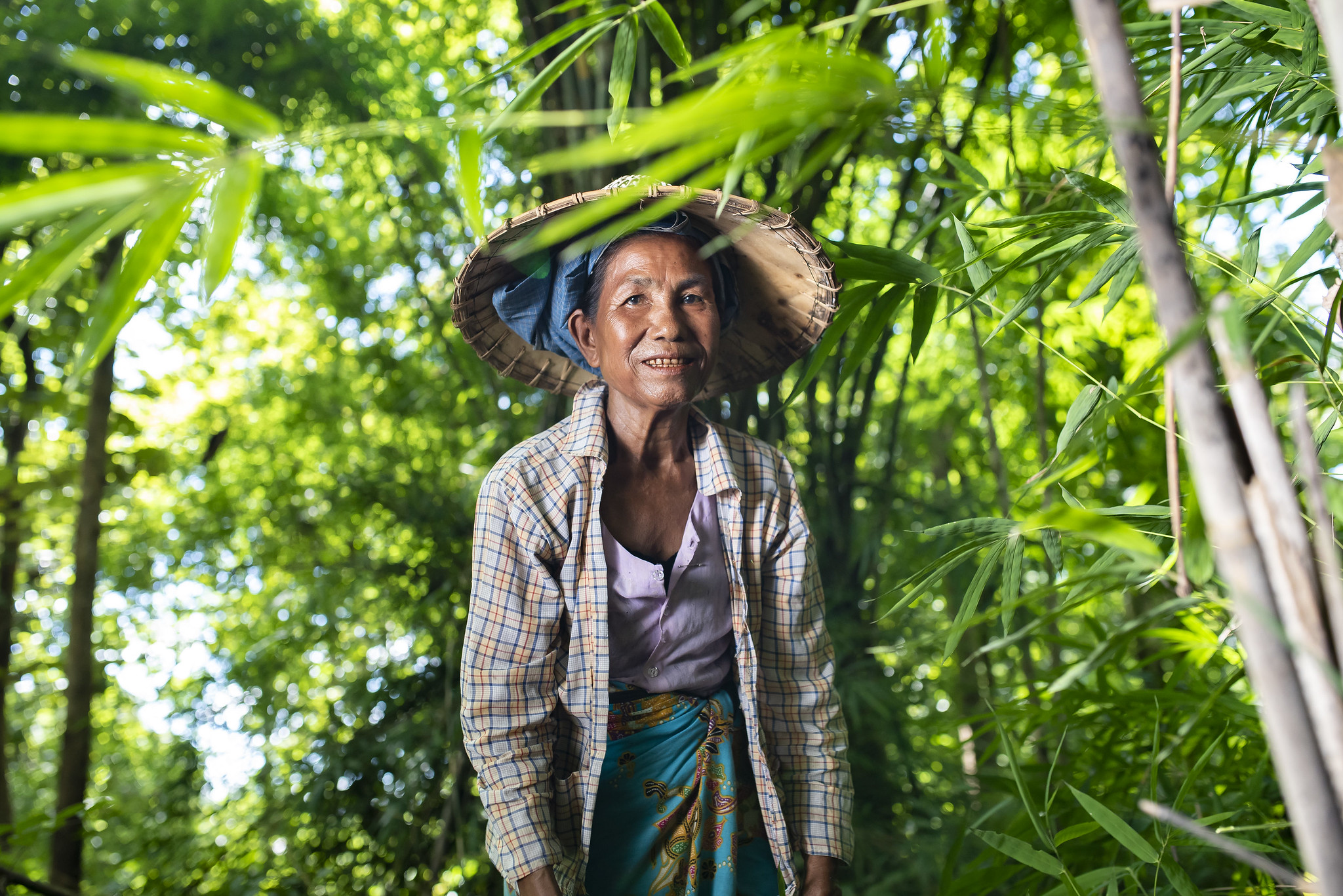Indigenous Peoples are widely seen as the guardians of forests. Respect for their rights and recognition of their invaluable contribution to climate change solutions are vital if the world is to meet its climate goals – including the halting and reversing deforestation by 2030.
Agreed at the 2021 United Nations climate summit in Glasgow, the global pledge to halt and reverse forest loss by 2030 is fast-approaching, with urgent action now needed to bolster Indigenous People’s rights and ramp up sustainable forest management and conservation.
A report published in June by the UN-REDD Programme, which provides assistance to countries looking to tackle deforestation and fund forest-friendly policies, emphasized the urgent need for countries to enhance national climate action plans - also known as Nationally Determined Contributions (NDCs) - to effectively protect, restore and manage the world’s forests.
Forests are essential for achieving the Paris Agreement goals. The destruction of rainforests is a huge threat to climate action and the global aim of holding the increase in the global average temperature to well below 2°C and pursuing efforts to limit it to 1.5°C.
As we celebrate the International Day of the World’s Indigenous Peoples on 9 August, below are reasons why it is vital that global commitments to halt and reverse deforestation by 2030 are met:
How important are forests in tackling climate change?
Nature-based solutions– including forests - absorb about a third of planet-warming carbon dioxide emissions produced worldwide, but release carbon back into the air when they rot or are burned.
They also help combat air pollution, provide clean water, support human health, are a vital habitat for wildlife, provide livelihoods and food for Indigenous Peoples and communities living near them, guard against flooding and mitigate heat risks.
Forests can provide over a third of the emissions reductions needed before 2030, at a relatively low cost but climate funding into forests is too low to make a real difference.
About two-thirds of the world’s tropical forests are in just three countries – Brazil, Indonesia and the Democratic Republic of Congo.
According to an FAO report from 2020, the world has lost 178 million hectares of forest since 1990, which is an area about the size of Libya, while at least 1.11 billion hectares of primary forest remain intact. Primary forests are composed of native species in which there are little to no human activities and the ecological processes have not been significantly disturbed.
But time is running out for forests. Climate change-linked droughts and wildfires, coupled with logging, means that many rainforests are being fragmented and degraded to near points of no return. Some parts of the Amazon now emit more carbon than they absorb.
Such stress factors have left some vital ecosystems unable to return to healthy states and cycle carbon and water – essential functions.
As rainforests become less resilient, once-rich forested areas could soon become drier forests or open savannahs – irreversible damage that could lead to their eventual death.
Why are Indigenous Peoples vital for forest conservation?
Indigenous Peoples make up about 476 million of the global population and together, they own, manage or occupy one-quarter of the world’s land that is home to 80 per cent of the world’s biodiversity, according to the UNEP.
Indigenous communities relate to forests socially, economically, politically and spiritually. They use traditional knowledge and sustainable agriculture and resource management to ensure their forests’ survival. However, extractive practices such as large-scale logging, industrial farming and mining are risking both the rights of Indigenous Peoples and the health critical forest ecosystems.
Many Indigenous traditional practices are rooted in a deep understanding of and respect for ecological systems and promote sustainable resource use, according to the United Nations Development Programme (UNDP). These practices have a minimal adverse impact on the environment and are highly adaptive to ecological changes, fostering healthy and resilient ecosystems.
Because of their ecological knowledge, which is intergenerational and community-based, Indigenous Peoples were among the first to notice the early signs of climate change, the UNDP added. However, due to historical marginalization and political and economic power imbalances, Indigenous Peoples have often been overlooked as key agents of change as they continue to be displaced from their territories including forests.
Lands legally held or titled to Indigenous Peoples have significantly lower deforestation rates compared to other areas. A 2023 study on the Brazilian Amazon found that by ensuring land rights for Indigenous Peoples could see deforestation rates fall by 66 percent.
Indigenous lands in the Amazon are also effective and robust carbon sinks, absorbing more carbon than they release. The same study showed that Indigenous Peoples' lands in the Amazon capture significantly more carbon compared to other areas.
Titled Indigenous territories show a greater capacity for restoring deforested lands. Another 2023 study indicated a 5 percent increase in secondary forest coverage over 33 years in these areas, 23 percent higher than adjacent non-Indigenous lands.
The UN-REDD Programme ensures the participation of Indigenous Peoples in REDD+ activities through a variety of mechanisms. These include establishing participatory platforms and inclusive policies that involve indigenous communities in decision-making processes. The Programme also supports the implementation of Free, Prior, and Informed Consent (FPIC) and develops safeguards to respect Indigenous Peoples' rights and knowledge. Over 30 countries have benefitted from these efforts, incorporating Indigenous voices into forest conservation and climate strategies.
What actions have been taken to halt and reverse deforestation?
In recent years, as awareness on the importance of forests grows, countries have taken steps to tackle deforestation – with limited success.
The 2014 New York Declaration on Forests - backed by about 200 countries, household brands and green groups – looked to at least cut in half losses of natural forests by 2020 and set a target to end deforestation by 2030. Both targets have not or are unlikely to be achieved.
After a particularly bad forest burning “haze” outbreak in 2015, Indonesia, home to a third of the world’s rainforests, has achieved notable success reducing deforestation rates by introducing a moratorium on the conversion of primary forest and peatland.
The South-East Asian nation also imposed a temporary ban on new oil palm plantation permits, established a peatland and mangrove restoration agency, and sought to give greater control of forests to Indigenous Peoples.
A commitment made at the COP26 climate talks in Glasgow in late 2021 by more than 100 countries, pledged to halt and reverse deforestation by 2030 but forest experts says the world remains off-track.
To reduce carbon emissions, forest and mangrove replanting and restoration projects have been established by various countries, including Indonesia, China, Saudi Arabia, India, Pakistan, Ethiopia and Brazil. Many cities have also looked to go green with tree-planting initiatives.
Established in 2021, the LEAF Coalition, a forest conservation funding programme backed by the United States, United Kingdom and Norway alongside numerous global companies, seeks to both tackle climate polluters and reward tropical forest countries who are lowering deforestation.
In late 2022, the European Union became the first trading bloc to agree on a law to prevent companies from selling several commodities – such as cattle, wood, cocoa, soy, palm oil, coffee, rubber - linked to deforestation and forest degradation.
Around the same time, the world's rainforest-rich nations Brazil, Democratic Republic of Congo and Indonesia launched an alliance to cooperate on forest preservation and access finance after a decade of on-off talks.
Last year, Brazil’s government launched the ‘Tropical Forests Forever Fund’ and plans to co-ordinate policy across all departments, boost monitoring, develop a more sustainable businesses in the Amazon and give greater land rights to Indigenous Peoples.
What needs to happen next?
Urgent and bold action is now needed from all countries, as the world’s forests are running out of time. The inclusion of Indigenous Peoples in the formulation and implementation of climate policies and actions is crucial in achieving climate goals. These are just some of the measures could help us save the world’s forests and keep us within the Paris Agreement goals.
-
The Nationally Determined Contributions (NDCs) of the 20 countries most experiencing deforestation fall short and are not sufficient enough to meet the 2030 deforestation goal. Countries must include and enhance forest-based targets in their NDCs ahead of COP30. National targets on forests must be included in NDCs and implemented, with forest protection and restoration projects scaled up, and with the participation and inclusion of Indigenous Peoples.
-
Developed nations and companies must turn financing commitments into action to help fund forest conservation in developing countries. The flows of finance need to begin now not later. The growth of carbon credit schemes – which help countries and companies looking to reduce emissions and provide financial support to forest conservation both on the ground and nationally – must adhere to internationally-recognized rules, principles and monitoring to ensure they do not fall on short on environmental and social promises made. Countries and companies purchasing carbon credits should look to reduce their own emissions at the same time. Forest carbon prices must climb to at least USD30-USD50 per tonne to truly reflect the value of forest ecosystems. Countries and companies must heed the call for climate finance to directly flow to Indigenous Peoples and forest communities.
-
To also boost integrity, confidence and quality, forest action must be transparent and inclusive. Indigenous Peoples and local communities, women and young people must be included in forest conservation, sustainable management and restoration plans from planning, management to distribution of benefits to achieve the best results.
Photo Credit: ©UN-REDD Programme



